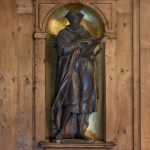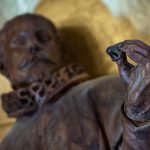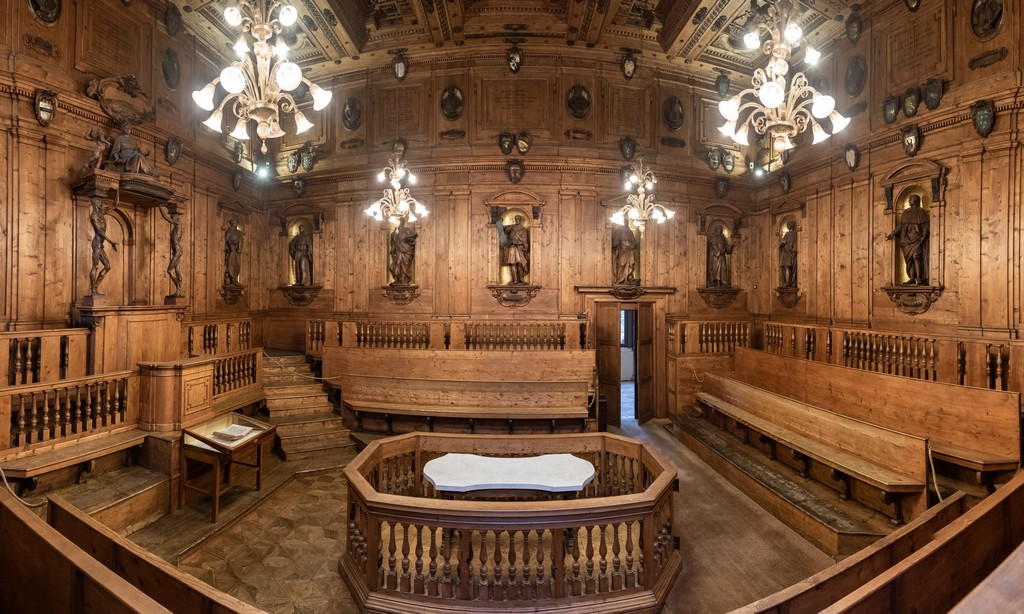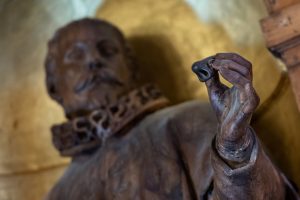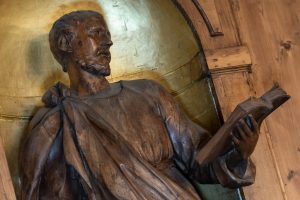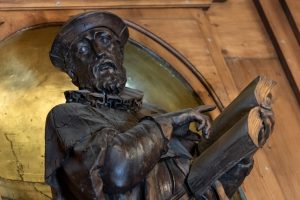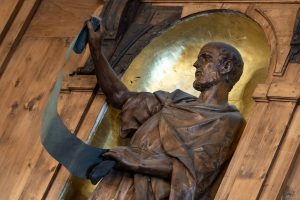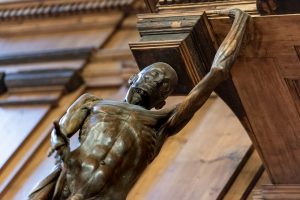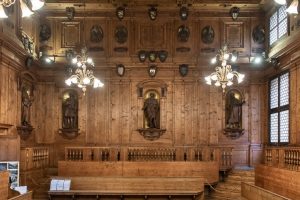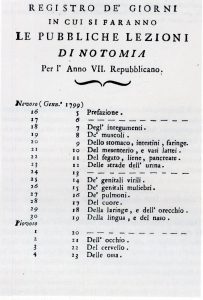The hall, called “Theatre” because of its amphitheatre-like shape, was designed in 1637 for the anatomical lessons carried out by the Bolognese architect Antonio Paolucci, called “Il Levanti”, a pupil of the Carracci.
The hall was covered in spruce wood and decorated with two orders of statues depicting twelve famous doctors (Hippocrates, Galen, Fabrizio Bartoletti, Girolamo Sbaraglia, Marcello Malpighi, Carlo Fracassati, Mondino de’ Liuzzi, Bartolomeo da Varignana, Pietro d’Argelata, Costanzo Varolio, Giulio Cesare Aranzio, Gaspare Tagliacozzi) and, at the top, there are twenty statues representing the most famous anatomists of the Bolognese Studio.
The chair of the Lecturer, which stands above that of the demonstrator, is flanked by two statues called “Spellati” (“Skinned”), sculpted in 1734 by Ercole Lelli, which were needed to visualize the human body, like an open book.
Above the canopy, a seated female figure, the allegory of Anatomy, receives a femur (insteas of a flower) as a tribute from a winged putto.
The anatomical room has sustained significant damage due to the bombing that, on the 29th January 1944, destroyed this wing of the building; it was rebuilt immediately after the war by reusing the original wooden sculptures that, fortunately, have been recovered from the ruins.
It is one of the oldest anatomical theatres preserved.
The public function of anatomy was a ceremony open to the public and which was held between the feast of St. Anthony Abbot (on the 17th of January) and the end of the carnival (in fact, even masked people and strangers visiting the city had often participated).
The Lecturer, that is the professor of anatomy, sat at the desk and read sat in the chair and read the passages taken from the classical texts that referred to surgery.
The engraver performed the dissections, then the anatomical piece was shown by the monstrance.
The bodies often belonged to those executed by the Torrone criminal court.
Curiosities:
